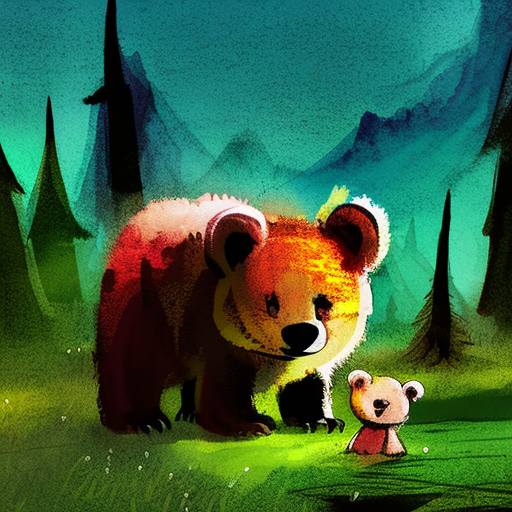One-line Summary:
Little Bear is a heartwarming children’s book that follows the adventures of a curious and imaginative bear cub as he explores the world around him.
Introduction:
Little Bear, written by Else Holmelund Minarik and illustrated by Maurice Sendak, is a beloved children’s book that takes young readers on a delightful journey through the imaginative world of a bear cub. First published in 1957, the book has captivated generations of children with its endearing characters, charming illustrations, and gentle storytelling. Little Bear’s adventures and interactions with his friends and family teach valuable lessons about friendship, empathy, and the power of imagination.
The Adventures of Little Bear:
Little Bear is a curious and playful cub who embarks on various adventures throughout the book. From exploring the woods to going on picnics, Little Bear’s escapades are filled with wonder and excitement. Whether he is pretending to be a giant or searching for a mermaid in a pond, Little Bear’s imagination knows no bounds. Each adventure brings new experiences and opportunities for learning, as he encounters different animals and discovers the beauty of nature.
The Importance of Friendship:
One of the central themes in Little Bear is the importance of friendship. Little Bear forms close bonds with his animal friends, including Duck, Hen, Cat, and Owl. Together, they engage in imaginative play, share stories, and support one another. Through their interactions, the book emphasizes the value of companionship, empathy, and understanding. Little Bear and his friends demonstrate kindness, patience, and acceptance, teaching young readers the significance of building meaningful relationships.
Lessons in Empathy and Understanding:
Little Bear’s encounters with different animals also provide opportunities for lessons in empathy and understanding. When Little Bear meets a mermaid who is sad because she cannot swim in the pond, he empathizes with her and finds a solution to make her happy. Similarly, when Little Bear and his friends come across a baby bird that has fallen from its nest, they work together to reunite it with its family. These moments teach children the importance of compassion, helping others, and putting themselves in someone else’s shoes.
Key Takeaways:
- Little Bear teaches children about the power of imagination and the joy of exploration.
- The book emphasizes the value of friendship, empathy, and understanding.
- Little Bear’s adventures encourage children to embrace their curiosity and creativity.
- The illustrations by Maurice Sendak bring the story to life and captivate young readers.
Memorable Quote:
“Little Bear said, ‘Mother Bear, I like you. I like you just the way you are.'” – Else Holmelund Minarik
In conclusion, Little Bear is a timeless children’s book that celebrates the power of imagination, friendship, and empathy. Through Little Bear’s adventures and interactions with his animal friends, young readers are encouraged to embrace their curiosity, explore the world around them, and develop meaningful relationships. The book’s charming illustrations by Maurice Sendak further enhance the enchanting storytelling experience. Little Bear is a must-read for children and adults alike, reminding us all of the beauty and wonder that can be found in the simplest of moments.












